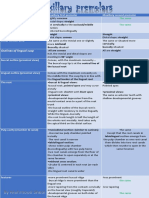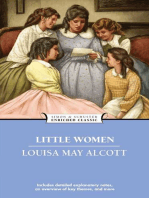Questions
Questions
Uploaded by
Ziyad AbdallahCopyright:
Available Formats
Questions
Questions
Uploaded by
Ziyad AbdallahOriginal Title
Copyright
Available Formats
Share this document
Did you find this document useful?
Is this content inappropriate?
Copyright:
Available Formats
Questions
Questions
Uploaded by
Ziyad AbdallahCopyright:
Available Formats
Bank questions of dental material2
Choose:
1. Requirements for model and die materials are all of the following
except:
a. Have high strength to resist breakage.
b. Nontoxic or irritable to the patient.
c. Hard to resist scratching during use.
d. Reproduce fine details of the impression.
2. ……………… cannot be used to take an impression for dentulous
patient.
a) Impression compound
b) Alginate
c) Polysulfide
d) Addition silicone
3. Waiting for at least half an hour before casting addition silicone is
to……………
a. Decrease polymerization shrinkage
b. Help cross linking
c. Release all hydrogen bubbles
d. Avoid syneresis and imbibition
4. Compound is reversible and elastic impression material.
a. True b. False
5. Latex gloves interfere with setting reaction of the following
impression
a. Polyether b. Addition silicone
c. Condensation silicone d. Polysulfide
6. Regarding to alginate impression; one of the following is not true
a. it is hydrocolloid b. need special tray
c. should be poured immediately d. need perforated stock tray
7. Surfactant is added to……………..
a. addition silicone
b. condensation silicone.
c. alginate impression.
d. zinc oxide eugenol impression.
8. Water is formed as a by-product of polymerization reaction of
a. alginate impression
b. condensation silicone
c. polysulfide impression
d. polyether impression
11. Gypsum is CaSO4· ½H2O while gypsum products are CaSO4 ·
2H2O.
a. True b. False
12. Compound impression is a rigid impression. It can be repaired
and reused.
a. Both statements are true
b. Both statements are false
c.The first statement is true, the second statement is false
d. The first statement is false, the second statement is true
13. Role of copper in dental amalgam;
A. red uses tarnish and corrosion
B. increases creep
C. prevents oxidation
D. prevents gamma formation
14. All of these are considered as disadvantages of light-cured
composite filling except: a. limited depth of cure
b. intensity of light source gradually decreases with time
c. health hazard of UV rays
d. polymerization shrinkage is towards the center of the cavity
15. Bonding to enamel is relatively simple process. Bond strength is
generally less in deep dentine than in superficial dentine:
a. Both statements are true b. Both statements are false
c. The first statement is true, the second statement is false
d. The first statement is false, the second statement is true
16. One of these statements is not correct:
a. Bond strength is same at all depth of dentine.
b. Bonding to enamel is easier than dentine.
c. Smear layer affects bond strength.
d. Smear layer is a loosely attached layer.
17. Advantage of chemical-cured composite.
a. Short working time.
b. Color stable.
c. Reaction not occurs uniformly.
d. Reaction not depends on thickness of restoration.
18. The least flexible elastomeric impression material is
a. Polysulfide. b. Polyether.
c. Condensation silicone. d. Addition silicone.
19. Requirements for model and die materials are all of the following
except
a. Have high strength to resist breakage.
b. Nontoxic or irritable to the patient.
c. Hard to resist scratching during use.
d. Reproduce fine details of the impression.
20. ……………… cannot be used to take an impression for dentulous
patient.
a. Impression compound b. Alginate
c. Polysulfide d. Addition silicone
21. In dental composite, the role of the fillers is all of the following
except:
a. Reduce shrinkage upon curing
b. Increase mechanical properties as strength
c. Reduction of coefficient of thermal expansion
d. Initiate polymerization reaction
22. All of the following office conditions minimize the health hazard
of mercury except
a. No touch technique.
b. Spills of Hg should be avoided
c. Floor carpeting.
d. Amalgam scrap stored in a closed container
23.What compound has been eliminated from amalgam to improve
corrosion resistance and reduce creep?
a. Gamma b. Gamma-1
c. Alpha-1 d. Gamma-2
24. Advantages of primer are all of the following except:
a. Enhances monomer penetration
b. Increased surface roughness
c. Increased surface energy
d. Increased surface wettability
25. Potassium titanium fluoride is added to alginate to:
a. retard gel formation
b. act as disinfectant agent
c. accelerates setting of gypsum products
d. makes it dustless
26. All of these are components of dental composite resin material
except
a. resin matrix.
b. filler.
c. plasticizer.
d. initiator and inhibitor.
27. Surfactant is added to……………..
a. addition silicone.
b. condensation silicone.
c. alginate impression.
d. zinc oxide eugenol impression.
28. Compound impression is a rigid impression. It can be repaired
and reused.
a. Both statements are true
b. Both statements are false
c. The first statement is true, the second statement is false
d. The first statement is false, the second statement is true
29. All of the following will accelerate setting reaction of alginate
except
a. increasing water temperature to a certain level
b. increasing water\powder ratio
c. decreasing water\powder ratio
d. none of the above
30. In composite filling, ……………… is used to bond filler with
resin matrix.
a. Primer b. Coupling agents
c. Adhesive d. Acid etch
31. Regarding to leakage of dental amalgam; one of this is not true:
a. decreased by time
b. increased by time
c. corrosion product affect leakage
d. It is called "self-sealing"
32. Metallic spatula is not recommended for mixing…………
a. Chemical-cured composite
b. Zinc oxide eugenol cement
c. Zinc polycarboxylate cement
d. Zinc phosphate cement
33. Color instability of self-cured acrylic denture base is due to
presence of residual monomer. Correct: due to oxidation of
tertiary amine
a. True b. False
34. In dental amalgam; indium acts as scavenger Correct: ZN
a. True b. False
35. Zinc free amalgam is recommended for children. Contamination
with saliva increases corrosion of amalgam. a. Both statements are true
b. Both statements are false
c. The first statement is true, the second statement is false
d. The first statement is false, the second statement is true
35. Regarding to fine particles of dental amalgam;
a. Need less amount of mercury
b. Produce rough surface during carving
c. Give smooth surface during carving
d. Set amalgam has high mechanical properties
36. In dental amalgam; γ2 content is responsible for
a. increasing creep
b. increasing strength
c. increasing corrosion resistance
d. increasing delayed expansion
37. Excessive corrosion can lead to all of the following except
a. increased porosity
b. reduced marginal integrity
c. loss of strength
d. increased coefficient of thermal expansion
38. Resin matrix of dental composites
a. Binds filler particles together
b.Has the highest strength
c.Decreases coefficient of thermal expansion
d.Reduce shrinkage upon curing
39. Heat cure Polymethyl methacrylate initiator is
a) Camphor Quinone
b) Benzoyl peroxide
c) Barium salts
d) Heat
40. The stage for packing of acrylic resin is
a)sandy stage
b)Dough stage
c)Rubbery stage
d)Stringy stage
41. The cause of gaseous porosity is
a) Under packing (small amount of dough is used in the mold).
b) Decrease the powder/ monomer ratio
c) Increase powder/monomer ratio
d) Excessive heating and boiling of the monomer
42. The cause of Contraction porosity is
a) Under packing (small amount of dough is used in the mold).
b) Packing in sandy stage
c) Increase powder/monomer ratio
d) Excessive heating and boiling of the monomer
43. The cause of Granular porosity is
a) Under packing (small amount of dough is used in the mold).
b) Decrease the powder/ monomer ratio
c) Increase powder/monomer ratio
d) Excessive heating and boiling of the monomer
44. To reduce crazing of acrylic resin we should add
a) Plasticizer
b) Crosslinking agent
c) Glass fibers
d) Pigments
45. Activator of cold cure acrylic resin is
a) Light
b) Heat
c) Benzoyl peroxide
d)Chemical (dimethyl-p-toluidine)
46. Cold cure Acrylic resin used as denture repair material because
a) High strength
b) More color stability
c) Less dimensional changes
d) High dimensional changes
47. High impact strength acrylic resin contains
a) More polymers to monomer ratio
b) More plasticizer
c) More crosslinking agent
d) Butadiene-styrene rubber
48. The bond between acrylic teeth and acrylic denture base is
a) Mechanical
b) Chemical
c) Physical
d) Micromechanical
49. The bond between porcelain teeth and acrylic denture base is
a) Mechanical
b) Chemical
c) Physical
d) Micromechanical
50. Acrylic teeth are more color stable than porcelain teeth
a) True b) False
51. Porcelain teeth are more brittle than acrylic teeth
a) True b) False
52. Porcelain teeth are harder than acrylic teeth
a) True b) False
53. The higher the amount of residual monomer in cured acryl the
higher the allergic effect
a) True b) False
54. Zinc polycarboxylate cement is
a) Translucent cement (esthetic)
b) Bond chemically to tooth structure
c) Has low compressive strength
d) Has high tensile strength
55. Zinc oxide eugenol cement cannot be placed under composite
restoration because
a) It bond chemically with tooth structure
b) It irritate the pulp
c) It prevent polymerization reaction
d) Insoluble in oral fluids
56. In deep cavities close to the pulp we should not use Zinc
phosphate cement without liner because of
a) Low thermal conductivity
b) Low initial pH.
c) High thermal conductivity
d) High initial pH.
57. Zinc oxide eugenol cement has sedative effect on the pulp due to
presence of
a) Eugenol and their neutral pH.
b) Chemical bond to tooth structure.
c) Low initial pH.
d) Large size of the liquid molecule.
58. Disadvantages of zinc oxide eugenol are
a) ZOE has obtunding effect on the pulp.
b) Good sealing ability.
c) Low strength, Low abrasion resistance.
d) Low solubility.
59. Material that used as pulp capping is
a) Glass ionomer
b) Calcium hydroxide
c) Zinc oxide eugenol
d) Resin modified glass ionomer.
60. Cavity varnishes cannot be used under
a) Amalgam restoration
b) Zinc phosphate cement
c) Restorative resins (e.g. composite)
d) Zinc oxide eugenol.
61. GIC type III is used as
a) Luting crowns and bridges.
b) Base and liner
c) Class V restorative cement.
d) Pulp capping material.
62. GICs possess anticariogenic properties as a result of
a) Insoluble in oral fluids.
b) Chemical bond to tooth structure.
c) Biocompatibility to the pulp.
d) Fluoride release.
63. Liquid of GIC cement is
a) Phosphoric acid
b) Copolymers of Phosphoric acid and acrylic acid
c) Eugenol and methyl methacrylate.
d) Copolymers of acrylic acid and itaconic acid.
64. Resin cement that can bond to the tooth surface on their own
without the need for prior etching and bonding is.
a) Conventional resin cements b) Hybrid glass
ionomer
c) Adhesive resin cements
d) Total etch resin cement.
65. When we use all ceramic restoration the cement of choice is
a) Zinc phosphate cement
b) Calcium hydroxide
c) Zinc oxide eugenol cement
d) Resin cement
66.one of these statements is not correct:
a) Smear layer is loosely attached layer
b) bonding to enamel is easier than dentin
c) smear layer affect bond strength
d) bond strength is same at all depth of dentin
67.advantage of chemical-cured composite:
a) reaction not depends on thickness of restoration
b) color stable
c)short working time
d)reaction not occur uniformly
68.in dental composite, the role of the fillers is all of the following
except:
a) reduce shrinkage upon curing
b) increase mechanical properties as strength
c) reduction of coefficient of thermal expansion
d) initiate polymerization reaction
69.one of the following is not the objectives of condensation of
amalgam:
a) packing to final contour
b) good adaptation to cavity walls
c) development of a mass free from voids
d) elimination of excess mercury
70.metallic spatula is not recommended for mixing:
a) zinc polycarboxylate cement
b) zinc phosphate cement
c) zinc oxide eugenol cement
d) chemical-cured composite
71.which of the following physical properties are most desirable in
set:
a) low strength, low creep, low corrosion
b) high strength, high creep, high corrosion
c) high strength, high creep, low corrosion
d) high strength, low creep, low corrosion
72.all of these component of dental composite resin material except:
a) resin matrix
b) filler
c) initiator & inhibitor
d) plasticizer
73.role of zinc in dental amalgam:
a) increase creep
b) prevents gamma formation
c) reduces tarnish & corrosion
d) prevents oxidation during manufacturing
74.in composite filling, ………….. is used to bond filler with resin
matrix.
a) adhesive b) primer
c) acid etch d) coupling agent
75.regarding to leakage of dental amalgam; one of this is not true:
a) increased by time
b) corrosion product affect leakage
c) it is called self-sealing
d) decreased by time
76.which one of the following material can be used as permanent
restorative material:
a) EBA reinforced ZOE cement
b) resin modified zinc oxide eugenol cement
c) resin cement
d) resin modified glass ionomer
77.what is the most important property of dental cement to be used
as luting agent
a) low film thickness
b) good optical properties
c) mechanical adhesion to tooth structure
d) low thermal conductivity
78.how dental operator can accelerate the setting reaction of zinc
oxide eugenol cement
a) decreases the rate of hand mixing (spatulation)
b) adds the powder to the liquid in small increments
c) adds drop of water to the mix
d) deceases P/L ratio
79.what is the main property of dental cements that release fluoride
a) biocompatibility
b) anticariogenicity
c) chemical bond to tooth structure
d) stimulate the formation of reparative dentin
80.which one of the following dental cements has obtundent
or anodyne effect to the pulp
a) zinc phosphate cement
b) zinc oxide eugenol cement
c) resin cements
d) glass ionomer cements
81.which one of these materials must not be used under composite
resin restoration
a) zinc phosphate cement
b) zinc oxide eugenol cement
c) resin modified glass ionomer cement
d) glass ionomer cement
82.why calcium hydroxide can be used as pulp capping material
a) bond chemically with tooth structure
b) fluoride release
c) high strength
d) stimulate reparative dentin formation
83.what is the liquid of conventional zinc polycarboxylate cement
a) Phosphoric acid
b) co polymers of phosphoric acid & acrylic acid
c) eugenol & methyl Methacrylate
d) co polymers of acrylic acid & itaconic acid
84.what is the main advantage of GICs?
a) high fluoride release
b) high sensitivity to water or dehydration
c) long setting time
d) mechanical bond with tooth
85.why zinc polycarboxylate cement liquid is less irritant to the pulp
than zinc phosphate liquid
a) weak bond with tooth structure
b) PH of its liquid is higher than that of zinc phosphate
c) higher molecular weight of its liquid than zinc phosphate liquid
d) PH of its liquid is lower than that of zinc phosphate
86. Cavity varnishes should be applied under
a. GIC
b. Zinc poly carboxylate cement
c. composite restoration
d. Amalgam restoration
87. Water is essential for setting reaction of……. impression
a. Addition silicone
b. Polyether
c. Condensation silicone
d. Zinc oxide eugenol
88. Metallic spatula is not recommended for mixing…………
a. Zinc polycarboxylate cement
b. Zinc oxide eugenol cement
c. Chemical-cured composite
d. Zinc phosphate cement
89. One of the disadvantages of light-cured composite is
a. intensity of light decreased
b. no mixing
c. less waste of material
d. short woking time
90. What are the roles of etchant in bonding system?
a. Decrease surface energy and wettability
b. Enhances monomer penetration
c. Increase surface area and remove smear layer
d. Decrease surface roughness and remove smear layer
91. Heat cure Polymethyl methacrylate initiator is
a. Heat
b. Benzoyl peroxide
c. Barium salts
d. Camphorquinone
92. Acrylic denture teeth are characterized by all of the following
except …………
a. not expensive
b. chemical bond with acrylic denture base
c. high wear resistance
d. light in weight
93. What is the cause of Contraction porosity of acrylic resin?
a. Under packing (small amount of dough is used in the mold)
b. Increase powder/monomer ratio
c. Excessive heating and boiling of the monomer
d. Packing in sandy stage
94. What is the chemical formula of Dental plaster type?
a. β Calcium sulfate dihydrate
b. α Calcium sulfate dihydrate
c. α Calcium sulfate hemihydrate
d. β Calcium sulfate hemihydrate
95. Regarding to lath-cut particles of dental amalgam;
a. Require more mercury
b. Need less condensation pressure
c. Proximal contour is not adequate
d. Properties are better than spherical particles
96. Why GICs have anticariogenic properties?
a. Fluoride release & alkaline pH
b. Fluoride release
c. Chemical bond to tooth structure
d. Not biocompatible to the pulp
97. What are the problems associated with bonding with dentin?
a. Poor wettability and smear layer
b. Homogenous composition and smear layer
c. High surface energy and poor wettability
d. Hydrophobicity and high surface energy
Complete
1. ….Alginate…. is an elastic material which used as primary
impression.
2. ……Die…is a positive replica of a single tooth.
3. ….Model.... is a positive replica of the teeth and adjacent structures.
4. …condensation polymerization is the reaction which characterized by
release of by product.
5. ……Elastomers……. refer to a group of rubber polymers, which are
either chemically or physically cross-linked.
6. ……Colloids……classified as a fourth state of matter and formed
from two phases: the dispersed phase and the dispersion medium.
7. ……Sponification……….is the reaction of eugenol-free zinc oxide
impression.
8. ……Electroplating…. is the process in which impression is present at
the cathode and the metallic bar is present at the anode.
9. Water is by product of……Polysulfide……. impression material.
10. The weakest gypsum product is………Model Plasters……...
You might also like
- The Subtle Art of Not Giving a F*ck: A Counterintuitive Approach to Living a Good LifeFrom EverandThe Subtle Art of Not Giving a F*ck: A Counterintuitive Approach to Living a Good LifeRating: 4 out of 5 stars4/5 (6050)
- The Gifts of Imperfection: Let Go of Who You Think You're Supposed to Be and Embrace Who You AreFrom EverandThe Gifts of Imperfection: Let Go of Who You Think You're Supposed to Be and Embrace Who You AreRating: 4 out of 5 stars4/5 (1134)
- Never Split the Difference: Negotiating As If Your Life Depended On ItFrom EverandNever Split the Difference: Negotiating As If Your Life Depended On ItRating: 4.5 out of 5 stars4.5/5 (916)
- Hidden Figures: The American Dream and the Untold Story of the Black Women Mathematicians Who Helped Win the Space RaceFrom EverandHidden Figures: The American Dream and the Untold Story of the Black Women Mathematicians Who Helped Win the Space RaceRating: 4 out of 5 stars4/5 (945)
- Grit: The Power of Passion and PerseveranceFrom EverandGrit: The Power of Passion and PerseveranceRating: 4 out of 5 stars4/5 (628)
- Shoe Dog: A Memoir by the Creator of NikeFrom EverandShoe Dog: A Memoir by the Creator of NikeRating: 4.5 out of 5 stars4.5/5 (548)
- The Hard Thing About Hard Things: Building a Business When There Are No Easy AnswersFrom EverandThe Hard Thing About Hard Things: Building a Business When There Are No Easy AnswersRating: 4.5 out of 5 stars4.5/5 (359)
- Her Body and Other Parties: StoriesFrom EverandHer Body and Other Parties: StoriesRating: 4 out of 5 stars4/5 (831)
- Elon Musk: Tesla, SpaceX, and the Quest for a Fantastic FutureFrom EverandElon Musk: Tesla, SpaceX, and the Quest for a Fantastic FutureRating: 4.5 out of 5 stars4.5/5 (481)
- The Emperor of All Maladies: A Biography of CancerFrom EverandThe Emperor of All Maladies: A Biography of CancerRating: 4.5 out of 5 stars4.5/5 (277)
- The Yellow House: A Memoir (2019 National Book Award Winner)From EverandThe Yellow House: A Memoir (2019 National Book Award Winner)Rating: 4 out of 5 stars4/5 (99)
- The Little Book of Hygge: Danish Secrets to Happy LivingFrom EverandThe Little Book of Hygge: Danish Secrets to Happy LivingRating: 3.5 out of 5 stars3.5/5 (437)
- Devil in the Grove: Thurgood Marshall, the Groveland Boys, and the Dawn of a New AmericaFrom EverandDevil in the Grove: Thurgood Marshall, the Groveland Boys, and the Dawn of a New AmericaRating: 4.5 out of 5 stars4.5/5 (273)
- The World Is Flat 3.0: A Brief History of the Twenty-first CenturyFrom EverandThe World Is Flat 3.0: A Brief History of the Twenty-first CenturyRating: 3.5 out of 5 stars3.5/5 (2283)
- The Sympathizer: A Novel (Pulitzer Prize for Fiction)From EverandThe Sympathizer: A Novel (Pulitzer Prize for Fiction)Rating: 4.5 out of 5 stars4.5/5 (125)
- A Heartbreaking Work Of Staggering Genius: A Memoir Based on a True StoryFrom EverandA Heartbreaking Work Of Staggering Genius: A Memoir Based on a True StoryRating: 3.5 out of 5 stars3.5/5 (233)
- Team of Rivals: The Political Genius of Abraham LincolnFrom EverandTeam of Rivals: The Political Genius of Abraham LincolnRating: 4.5 out of 5 stars4.5/5 (235)
- On Fire: The (Burning) Case for a Green New DealFrom EverandOn Fire: The (Burning) Case for a Green New DealRating: 4 out of 5 stars4/5 (75)
- The Unwinding: An Inner History of the New AmericaFrom EverandThe Unwinding: An Inner History of the New AmericaRating: 4 out of 5 stars4/5 (45)
- ECOSOCinfo Rev EtDocument2 pagesECOSOCinfo Rev EtZiyad AbdallahNo ratings yet
- Fixed Past PapersDocument13 pagesFixed Past PapersZiyad Abdallah100% (1)
- Physio NoteDocument135 pagesPhysio NoteZiyad AbdallahNo ratings yet
- Patho QuizDocument37 pagesPatho QuizZiyad AbdallahNo ratings yet
- Operative QuizDocument7 pagesOperative QuizZiyad AbdallahNo ratings yet
- UWC Logical FallaciesDocument2 pagesUWC Logical FallaciesZiyad AbdallahNo ratings yet
- Opening Speech TemplateDocument3 pagesOpening Speech TemplateZiyad AbdallahNo ratings yet
- LipidDocument10 pagesLipidZiyad AbdallahNo ratings yet
- اسئلة الدنتشن mcq د.محمد عادلDocument60 pagesاسئلة الدنتشن mcq د.محمد عادلZiyad AbdallahNo ratings yet
- Maxillary PremolarsDocument2 pagesMaxillary PremolarsZiyad AbdallahNo ratings yet
- Fall 2017 Final Exam Model AnswerDocument6 pagesFall 2017 Final Exam Model AnswerZiyad AbdallahNo ratings yet
- Maxillary Central & Lateral IncisorsDocument2 pagesMaxillary Central & Lateral IncisorsZiyad AbdallahNo ratings yet
- Histology Assessment 3 (Connective)Document3 pagesHistology Assessment 3 (Connective)Ziyad AbdallahNo ratings yet
- CamScanner 12-01-2020 18.45.28Document8 pagesCamScanner 12-01-2020 18.45.28Ziyad AbdallahNo ratings yet
- Final SCOPE AND SEQUENCE OF COMPOSINGDocument2 pagesFinal SCOPE AND SEQUENCE OF COMPOSINGZiyad AbdallahNo ratings yet
- Epithelium MCQDocument19 pagesEpithelium MCQZiyad Abdallah100% (1)
- Histology Assessment 2 (Epithelium)Document4 pagesHistology Assessment 2 (Epithelium)Ziyad Abdallah100% (1)
- 705984858Document41 pages705984858Ziyad AbdallahNo ratings yet


























































